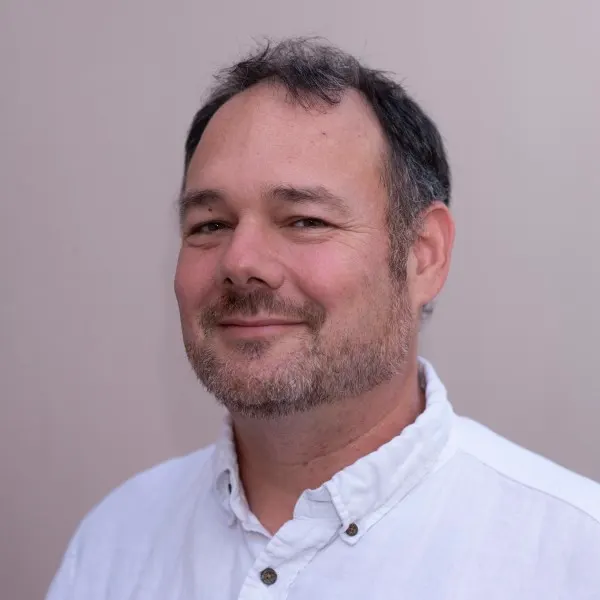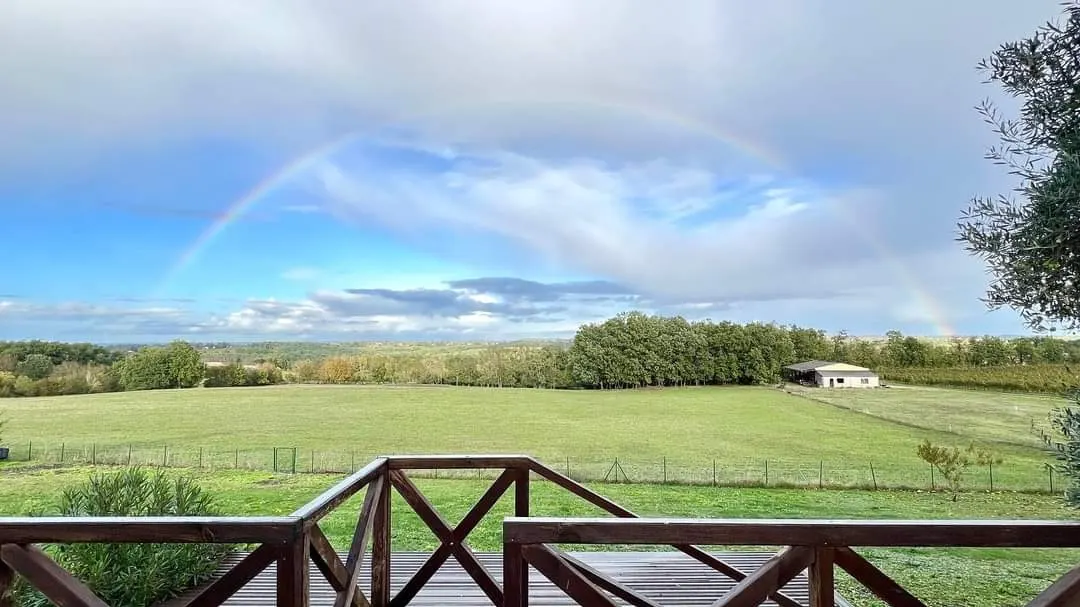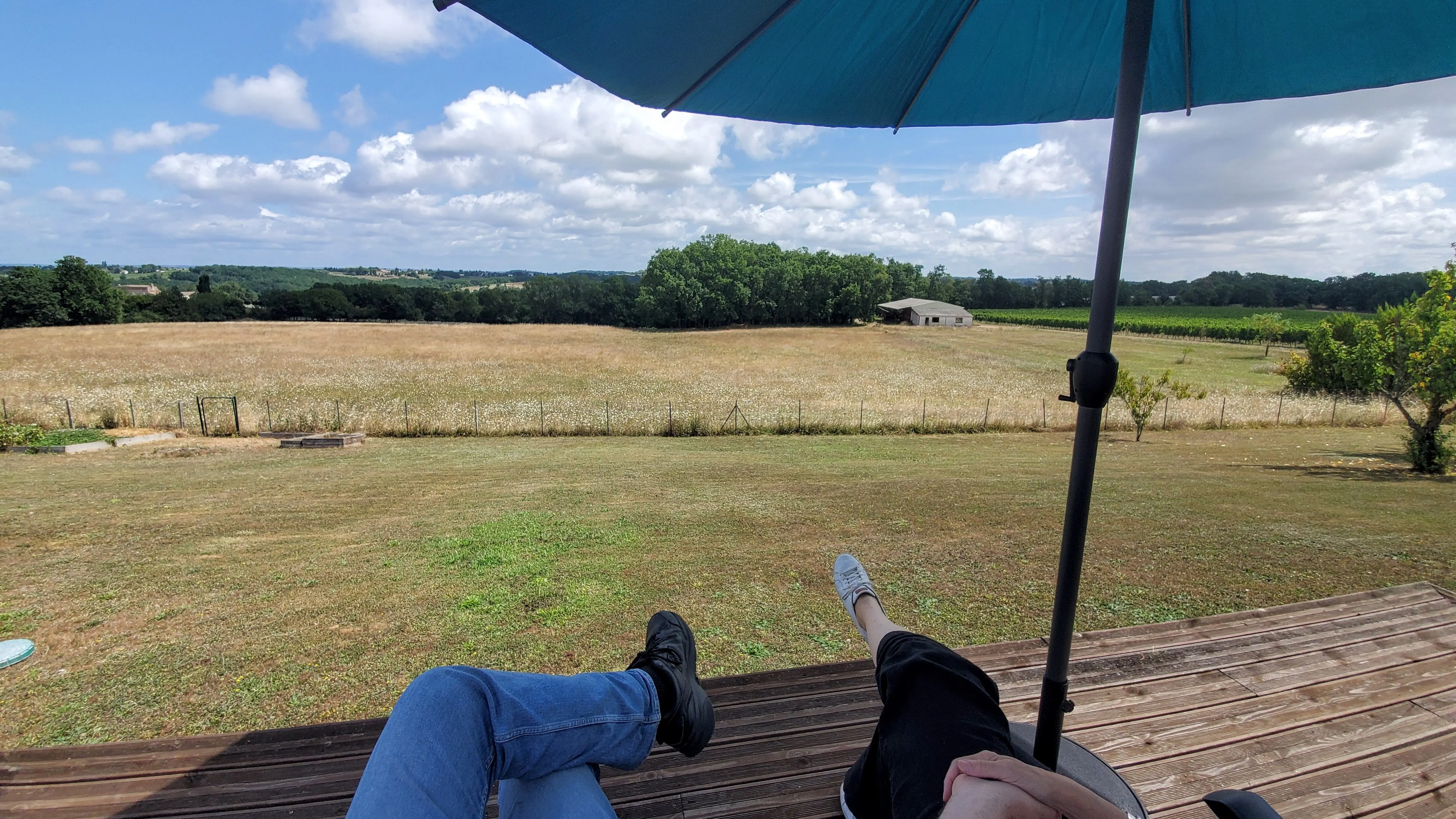Why This Hollywood Couple Chose France’s Dordogne for Their Dream Home
8 min readThe US political system wasn’t the sole driver for Michael Keesling, an American who recently moved to the sunflower-filled region of the Dordogne in France, but it certainly helped push the dial forward.
In his own words, it wasn’t “the meat and the potatoes of the meal” but certainly “the salt and pepper.”
A former long-term resident of Southern California, Michael was born and raised in the San Fernando Valley and, up until making the leap to France, hadn’t lived more than 30 miles from his place of birth. Although he’d shared a love of Los Angeles, and later the quieter suburbs of Thousand Oaks, with his wife Michele, the disparity between the “haves” and “have nots” in the United States did impact their quality of life.
Learn more about France and other countries in our daily postcard e-letter. Simply enter your email address below and we’ll send you a FREE REPORT: A Taste of France: All the Ingredients for the Good Life.
By submitting your email address, you will receive a free subscription to IL Postcards and special offers from International Living and our affiliates. You can unsubscribe at any time, and we encourage you to read more about our Privacy Policy.
Homelessness had become such a huge problem in LA, coupled with attitudes of entitlement on both sides of the political spectrum—which played out in unneighborly behaviors around their community. In short, a need to make some sort of a change had been brewing under the surface for some time.
In a move that could be called both brave and serendipitous, the couple hit a turning point during COVID—a period in which Michael and his wife had time to slow down from what he describes as a “workaholic” lifestyle in the motion picture industry in Los Angeles.

Mike won a SciTech Academy Award while working in Hollywood.
“When I wasn’t working in the motion picture industry,” says Michael, “I was working in research and everything was really about work. We didn’t even really have time to take vacations. My wife, who is French and moved to the United States when she was 18, got into the motion picture industry, and that’s how we met. We were very much work-motivated.”
It was a career of passion, with many hours spent fine-tuning his craft and throwing everything he had into work. There were also all the wonderful distractions of the Los Angeles arts and entertainment scene to keep the couple engaged in their Southern California lifestyle.
And then the pandemic hit. Instead of spending eight hours a day at work to come home exhausted, Michael felt that COVID gave him an opportunity to slow down and enjoy life at a slower pace.
“You’d go to your respective desks, work for a few hours, and then have coffee,” says Michael. Then, we’d do puzzles together or play board games at lunch. Then we’d have dinner together.”
It was around that same time that Michael and Michele took a one-week vacation to the big island of Hawaii—the most time he’d ever spent on vacation apart from visiting family members. During the trip, he met many of his contemporaries: men and women of similar age who happened to be living very different lifestyles from the one he had become accustomed to.
“They were happy,” says Michael. “Getting off work early, going surfing. It made my wife and I think about what we could be doing differently.”
Michele had already tossed around the idea of moving to France a few years prior, perhaps opening up a gîte—a French bed and breakfast. Even though that idea had lost some steam, the urgency to look into moving to France took on a new tenor for the couple. In February of 2020, Michael registered the domain name: wearemovingtofrance.com.
In the jumble of the pandemic, they embarked on the first of two scouting trips to France.
For their first scouting trip, they landed in Paris and took the train to Bordeaux. Then, renting a car, Michael says they did what he describes as a “sweeping tour” of the region—from Bordeaux to Narbonne.
“It was all just driving. Every day we just drove and looked at little villages and big cities, and tried to figure out what was the general vibe of the area,” he says.
The couple felt that Narbonne was very similar to Santa Barbara, California, and a bit on the pricey side. It didn’t have the French feel they wanted. On the other hand, the area around Bergerac and Bordeaux felt a lot closer to their expectations. They decided to go back the very next year and do an even more in-depth research tour.
“We concentrated our search on Bergerac,” says Michael, “and every day we drove, we took off in a different direction—north, south, east, west—sort of in a star pattern. We took a little booklet with us that my wife built, with her rating for amenities, charm, busyness, and things like that. We visited another few cities, and we narrowed it down to a 10- by 20-kilometer area.”
They sold their house in Thousand Oaks, California, and moved into a gîte (as a short-term rental) outside of Bergerac with their two golden retrievers and one cat. Here, they could concentrate on which village in the area they would eventually choose to move to.
The search for the perfect house was on.
Michael admits they were a bit numb from all the villages they had seen on their first scouting trip, so they decided to slow down and focus on their carefully crafted criteria. Michele’s booklet became their reference point. They had also taken short videos to help document their journey.
The top concerns were how livable the town was—that it didn’t completely shut down during the winter months—what local amenities they could find, and how close the community was to a hospital and medical services. Each criteria was ranked on a scale of one to five, eventually leading them to find their home.
Staying in the gîte helped them significantly narrow down their housing choices.
The couple realized that old stone homes, while terribly romantic, can also come with a host of problems that might not suit every taste. Michael felt that that experience was what ultimately led them to look for a more modern dwelling.
“These buildings require a lot of tender-loving care,” he recounts, “and that wasn’t really what we were after.”
The couple ended up buying a 19-year-old home for just under €300,000 ($324,000). The original home has three bedrooms and one full bathroom, with guest quarters added on later, which include a bathroom and shower. The home is 1830 square feet and sits on a 19,300-square-foot parcel of land, where Michael says he enjoys amazing sunrise views from the home’s terrace.

The view from Mike and Michelle’s terrace.
As a modern construction worker, Michael describes the upkeep as very easy, which seems to have taken some of the stress out of getting set up in France. A little over a year into their transition, he’s already experienced several insights into the local and regional culture that have helped him get acclimated.
“When you live in Los Angeles, you think you have access to everything,” says Michael. “You go to concerts, like the Hollywood Bowl. We would go downtown, or go to Koreatown or Japantown, or have a tourist day in the city. Then you realize that what should have been 40 minutes [to arrive] is an hour to an hour-and-a-half in traffic. Then you’re going to come back, and it’s going be another hour and a half or two hours to get back home.”
Michael also feels that the diversity of landscapes is really striking when compared to Southern California. Depending on the construction materials used, local villages can vary markedly, even a few kilometers apart.
The rolling green farmland of southwestern France is a welcome change from the dry landscape where Michael lived for almost his entire life. He can see grapevines from his office window and has recently purchased a bicycle to start exploring the local countryside.

Mike’s home sits on a 19,300-square-foot parcel of land.
He admits that getting used to Dordogne’s rainy season during the winter months is taking some time. The couple has taken great strides to become involved in the local community and are quickly making friends.
“We’re doing our best to integrate, and I think that it’s really important to become part of society here,” says Michael.
As a member of the committee for the photography club, he’s been given a chance to teach others while continuing to work on his creative passions. Michele is also diving right into community work, running the local language department and teaching a class for French people who are learning English.
Apart from making friends with locals and neighbors, Michael also shares his tips for a successful transition to France on his blog, www. wearemovingtofrance.com.
“It’s difficult trying to leave your American sensibilities behind and adopt new sensibilities,” he says, “Always remember that the frustration you feel is the frustration that everybody feels when they come here – but the benefits outweigh the frustration.”
He tells a story of arriving at a French supermarket at 8:30 a.m. one morning to find the store closed—something quite unthinkable at an American counterpart. Pulling on the handles and giving the doors a quick rattle to confirm the closure, Michael couldn’t quite wrap his head around not getting what he needed immediately. But then he turned off his American “sensibilities” and walked down the street to a French bakery.
Settling into a few freshly-baked croissants helped remind him of the trade-offs in his adopted country.
Besides learning to go with the flow, Michael and Michele acquired several helpful tips for would-be expats. First, French bureaucracy can be a lot easier if you remember to be nice to the people responsible for your dossier—paperwork. A lot of kindness goes a long way. Also, try to get your banking in order as soon as you arrive. Often, your American credit card will need to be accompanied by a signature to be valid in France, which poses problems at unforeseen places like the gas pump.
Remember that you won’t always find the products you had back home. Sometimes, you have to be resourceful when sourcing tools, household items, or even fabrics. Michele, an accomplished seamstress, has gotten creative when finding materials for her hobby.
Although the couple had an excellent experience bringing their animals over on Air France—with the pilot even visiting them at the start of the flight to let them know he’d checked on their pets—they do recommend starting the required paperwork to submit to the USDA very far in advance.
Having moved to the Dordogne with their college-aged daughter, the couple’s oldest daughter was fortunate to find a job in Paris, where she recently took up roots with her family. After a quick lunch in Bordeaux, Michael and Michele are around a three-hour train ride away from visiting their new grandbaby in the City of Light.
La vie Francaise—the French life—is pretty grand for the California transplants.
Learn more about France and other countries in our daily postcard e-letter. Simply enter your email address below and we’ll send you a FREE REPORT: A Taste of France: All the Ingredients for the Good Life.
By submitting your email address, you will receive a free subscription to IL Postcards and special offers from International Living and our affiliates. You can unsubscribe at any time, and we encourage you to read more about our Privacy Policy.


